Einari Vaaras
Investigating Affect Mining Techniques for Annotation Sample Selection in the Creation of Finnish Affective Speech Corpus
May 23, 2025Abstract:Study of affect in speech requires suitable data, as emotional expression and perception vary across languages. Until now, no corpus has existed for natural expression of affect in spontaneous Finnish, existing data being acted or from a very specific communicative setting. This paper presents the first such corpus, created by annotating 12,000 utterances for emotional arousal and valence, sampled from three large-scale Finnish speech corpora. To ensure diverse affective expression, sample selection was conducted with an affect mining approach combining acoustic, cross-linguistic speech emotion, and text sentiment features. We compare this method to random sampling in terms of annotation diversity, and conduct post-hoc analyses to identify sampling choices that would have maximized the diversity. As an outcome, the work introduces a spontaneous Finnish affective speech corpus and informs sampling strategies for affective speech corpus creation in other languages or domains.
PFML: Self-Supervised Learning of Time-Series Data Without Representation Collapse
Nov 15, 2024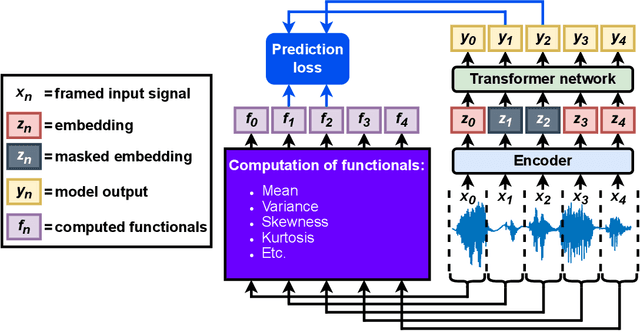



Abstract:Self-supervised learning (SSL) is a data-driven learning approach that utilizes the innate structure of the data to guide the learning process. In contrast to supervised learning, which depends on external labels, SSL utilizes the inherent characteristics of the data to produce its own supervisory signal. However, one frequent issue with SSL methods is representation collapse, where the model outputs a constant input-invariant feature representation. This issue hinders the potential application of SSL methods to new data modalities, as trying to avoid representation collapse wastes researchers' time and effort. This paper introduces a novel SSL algorithm for time-series data called Prediction of Functionals from Masked Latents (PFML). Instead of predicting masked input signals or their latent representations directly, PFML operates by predicting statistical functionals of the input signal corresponding to masked embeddings, given a sequence of unmasked embeddings. The algorithm is designed to avoid representation collapse, rendering it straightforwardly applicable to different time-series data domains, such as novel sensor modalities in clinical data. We demonstrate the effectiveness of PFML through complex, real-life classification tasks across three different data modalities: infant posture and movement classification from multi-sensor inertial measurement unit data, emotion recognition from speech data, and sleep stage classification from EEG data. The results show that PFML is superior to a conceptually similar pre-existing SSL method and competitive against the current state-of-the-art SSL method, while also being conceptually simpler and without suffering from representation collapse.
Evaluation of self-supervised pre-training for automatic infant movement classification using wearable movement sensors
May 16, 2023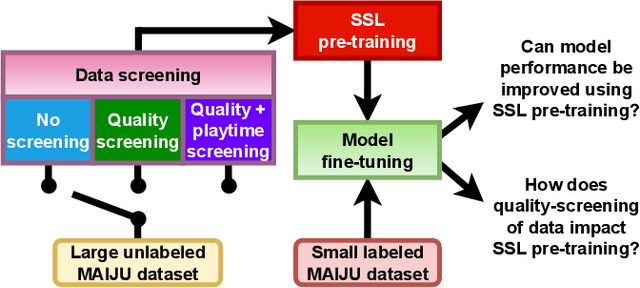
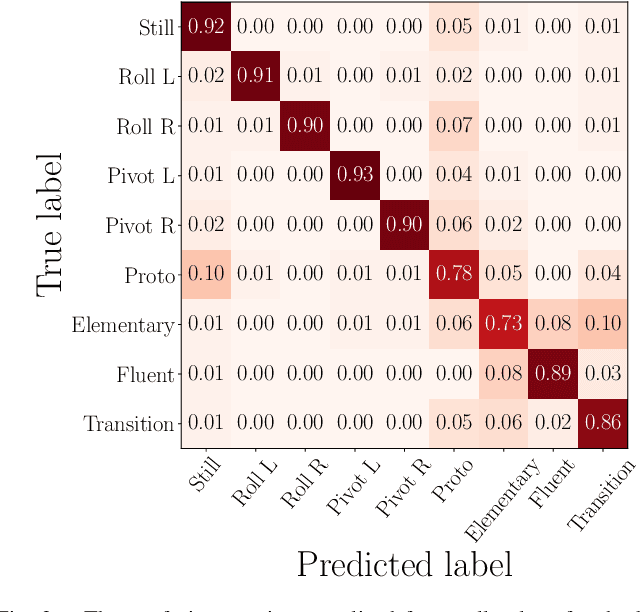
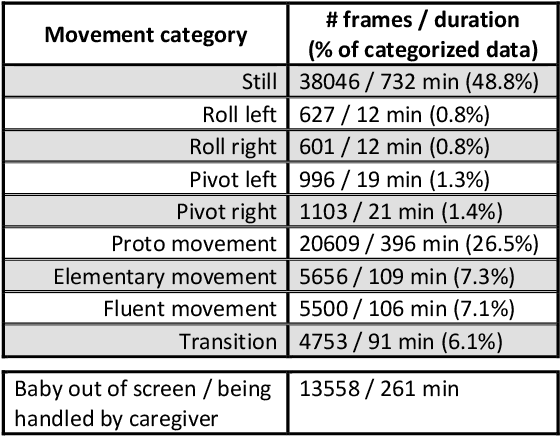
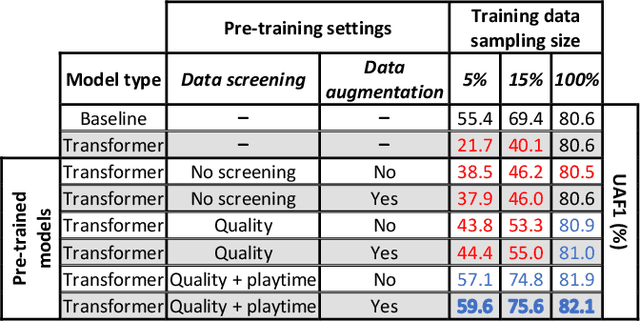
Abstract:The recently-developed infant wearable MAIJU provides a means to automatically evaluate infants' motor performance in an objective and scalable manner in out-of-hospital settings. This information could be used for developmental research and to support clinical decision-making, such as detection of developmental problems and guiding of their therapeutic interventions. MAIJU-based analyses rely fully on the classification of infant's posture and movement; it is hence essential to study ways to increase the accuracy of such classifications, aiming to increase the reliability and robustness of the automated analysis. Here, we investigated how self-supervised pre-training improves performance of the classifiers used for analyzing MAIJU recordings, and we studied whether performance of the classifier models is affected by context-selective quality-screening of pre-training data to exclude periods of little infant movement or with missing sensors. Our experiments show that i) pre-training the classifier with unlabeled data leads to a robust accuracy increase of subsequent classification models, and ii) selecting context-relevant pre-training data leads to substantial further improvements in the classifier performance.
Analysis of Self-Supervised Learning and Dimensionality Reduction Methods in Clustering-Based Active Learning for Speech Emotion Recognition
Jun 21, 2022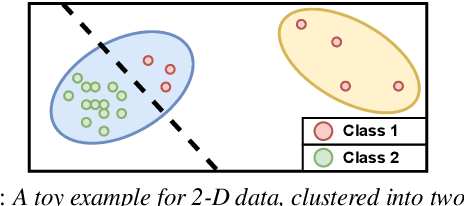

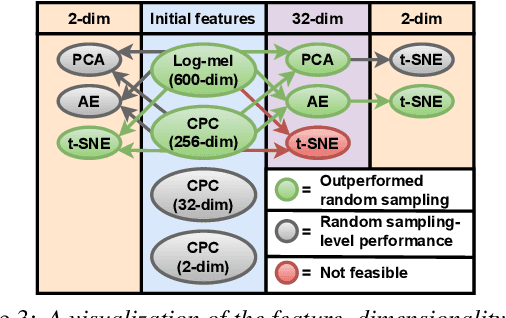
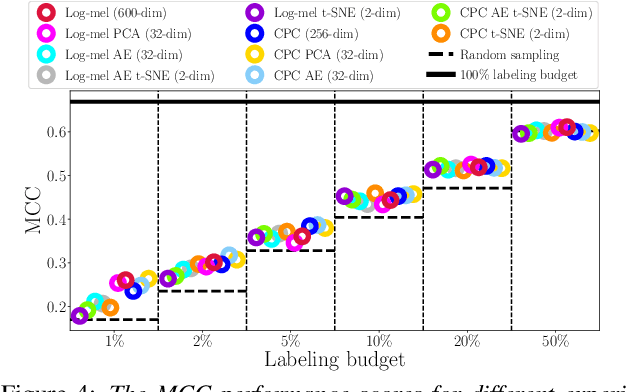
Abstract:When domain experts are needed to perform data annotation for complex machine-learning tasks, reducing annotation effort is crucial in order to cut down time and expenses. For cases when there are no annotations available, one approach is to utilize the structure of the feature space for clustering-based active learning (AL) methods. However, these methods are heavily dependent on how the samples are organized in the feature space and what distance metric is used. Unsupervised methods such as contrastive predictive coding (CPC) can potentially be used to learn organized feature spaces, but these methods typically create high-dimensional features which might be challenging for estimating data density. In this paper, we combine CPC and multiple dimensionality reduction methods in search of functioning practices for clustering-based AL. Our experiments for simulating speech emotion recognition system deployment show that both the local and global topology of the feature space can be successfully used for AL, and that CPC can be used to improve clustering-based AL performance over traditional signal features. Additionally, we observe that compressing data dimensionality does not harm AL performance substantially, and that 2-D feature representations achieved similar AL performance as higher-dimensional representations when the number of annotations is not very low.
Automatic Analysis of the Emotional Content of Speech in Daylong Child-Centered Recordings from a Neonatal Intensive Care Unit
Jun 14, 2021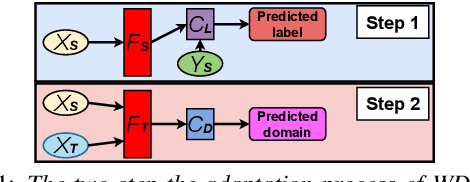
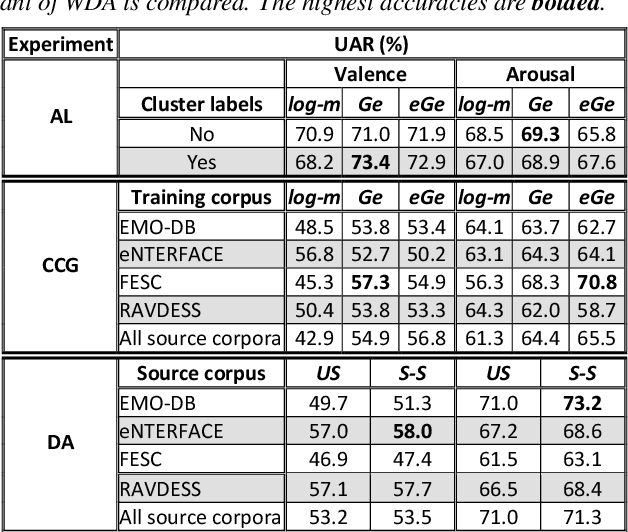

Abstract:Researchers have recently started to study how the emotional speech heard by young infants can affect their developmental outcomes. As a part of this research, hundreds of hours of daylong recordings from preterm infants' audio environments were collected from two hospitals in Finland and Estonia in the context of so-called APPLE study. In order to analyze the emotional content of speech in such a massive dataset, an automatic speech emotion recognition (SER) system is required. However, there are no emotion labels or existing indomain SER systems to be used for this purpose. In this paper, we introduce this initially unannotated large-scale real-world audio dataset and describe the development of a functional SER system for the Finnish subset of the data. We explore the effectiveness of alternative state-of-the-art techniques to deploy a SER system to a new domain, comparing cross-corpus generalization, WGAN-based domain adaptation, and active learning in the task. As a result, we show that the best-performing models are able to achieve a classification performance of 73.4% unweighted average recall (UAR) and 73.2% UAR for a binary classification for valence and arousal, respectively. The results also show that active learning achieves the most consistent performance compared to the two alternatives.
 Add to Chrome
Add to Chrome Add to Firefox
Add to Firefox Add to Edge
Add to Edge